The new Sixth Street Viaduct creates a “Ribbon of Light” between downtown and East Los Angeles communities
DESIGNER
2022
Since 1932, the 3,500-foot-long Sixth Street Viaduct in Los Angeles had been a beloved landmark and a longtime Hollywood star, appearing in movies, television shows, commercials, music videos and countless personal stories.
Studies showed the bridge needed to be replaced. Unable to be preserved, the longest and most recognizable bridge spanning the Los Angeles River was demolished for safety’s sake in 2016. And in its place, a new groundbreaking viaduct infused with innovations that are already leaving a legacy for future infrastructure projects.
Designed for the community
The City of Los Angeles Bureau of Engineering, the Sixth Street Viaduct’s lead delivery agency, recognized the need for extensive public engagement in deciding on a replacement. Working in tandem with neighboring Boyle Heights residents, the Bureau of Engineering launched an international design competition and invited community members to help select the winning design. In 2012, an HNTB-led team with collaboration from Los Angeles architect Michael Maltzan Associates and Danish bridge artchitect Dissing+Weitling was chosen to design the new structure.
The new Sixth Street Viaduct, opened in July 2022, features 10 lighted pairs of canted, network tied arches that form a “ribbon of light.” It melds structural technology with an aesthetic vision that pays homage to the 1932 bridge, which had two pairs of arches over its L.A. River section.
“Consideration of the community drove the design,” said Michael Jones, HNTB project manager and engineer of record. “We took a holistic approach, turning the whole viaduct into a signature structure, rather than just a crossing over the river, and making it a destination unto its own.”
The reborn bridge is a stellar, one-of-a-kind concrete network tied arch design that has captured the imaginations of Angelenos. Already embraced by the surrounding neighborhood, the new Sixth Street Viaduct rises to the level of icon aesthetically, technically and in the hearts of community members. In a city of stars, it is well on its way to becoming a star in its own right.
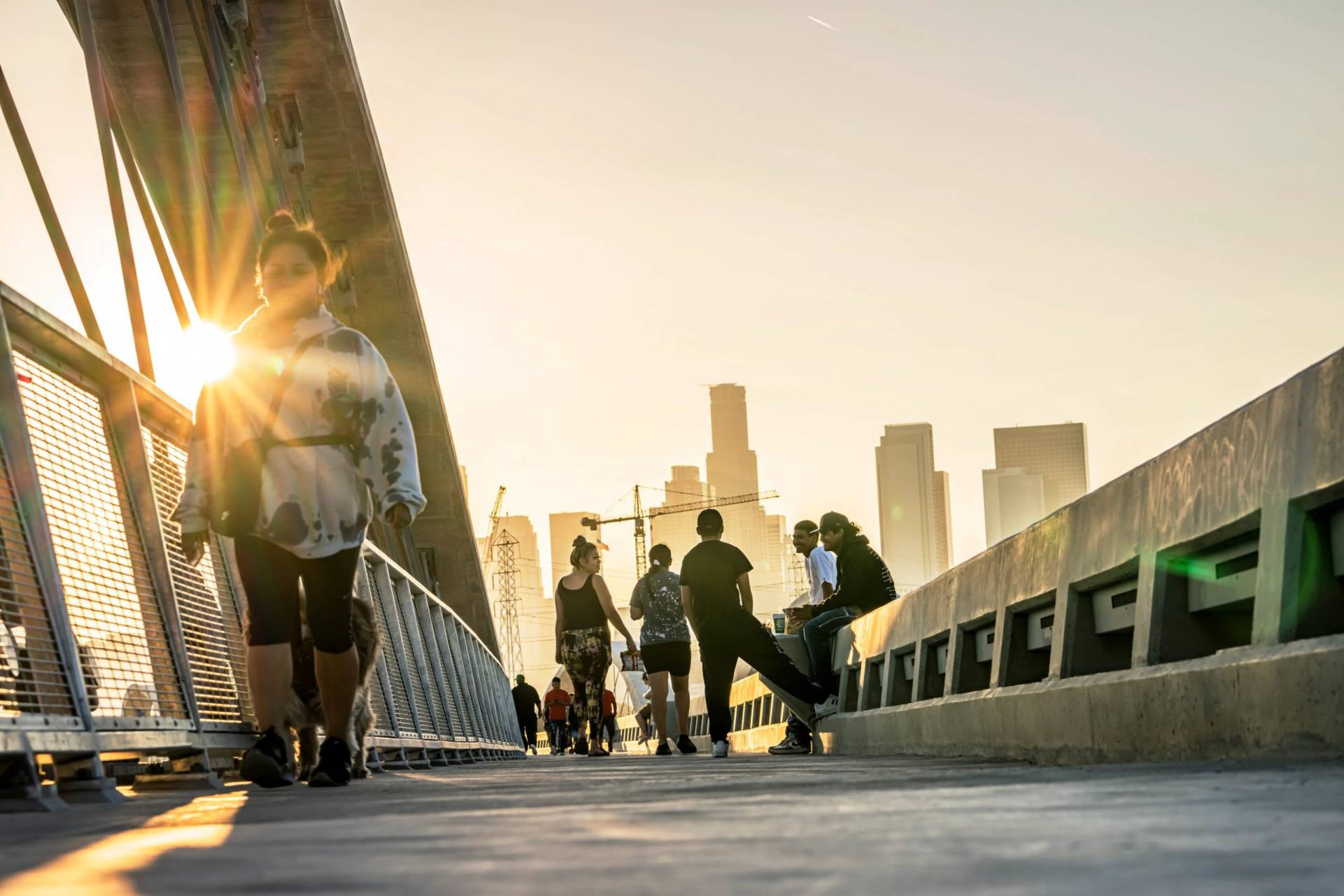
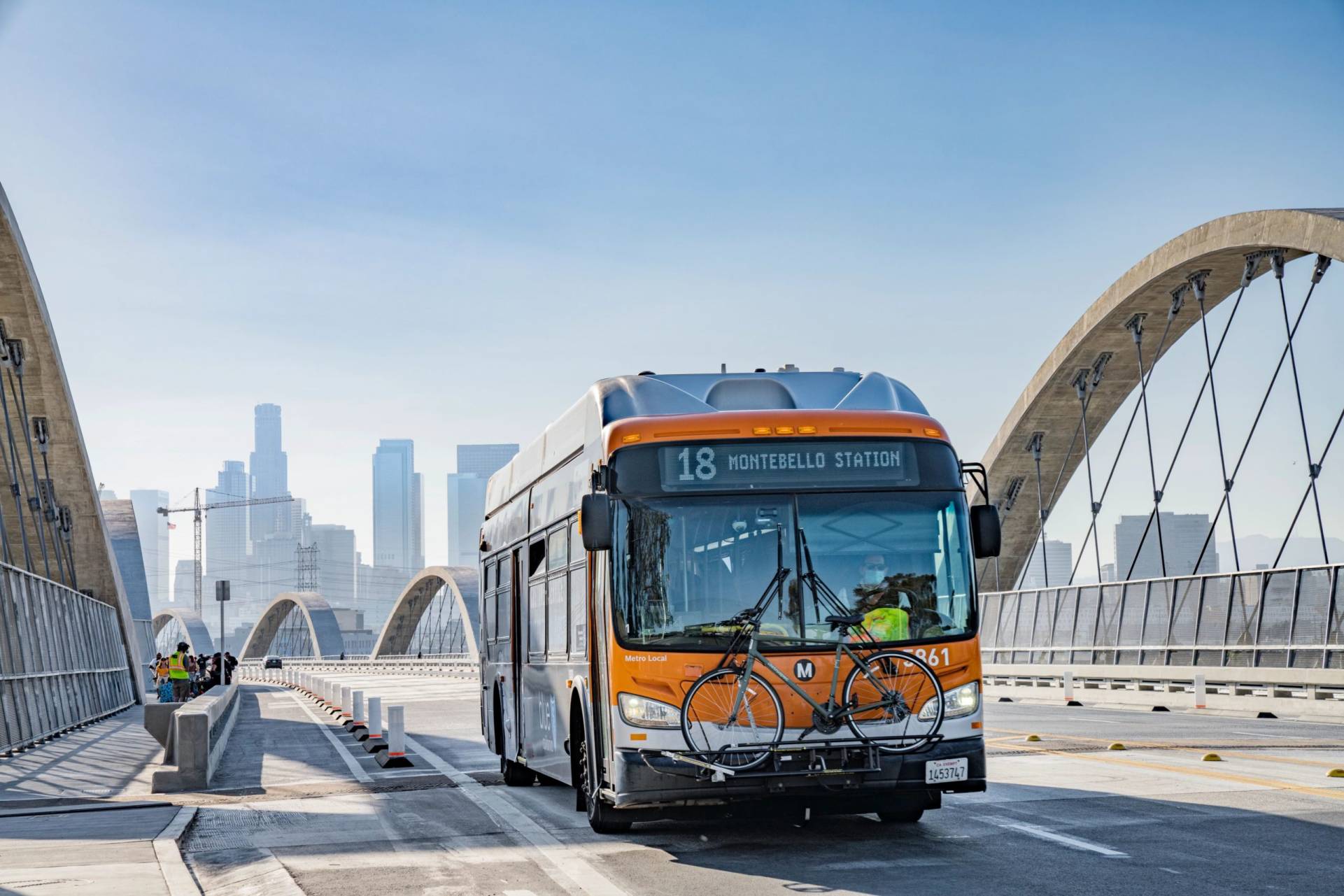
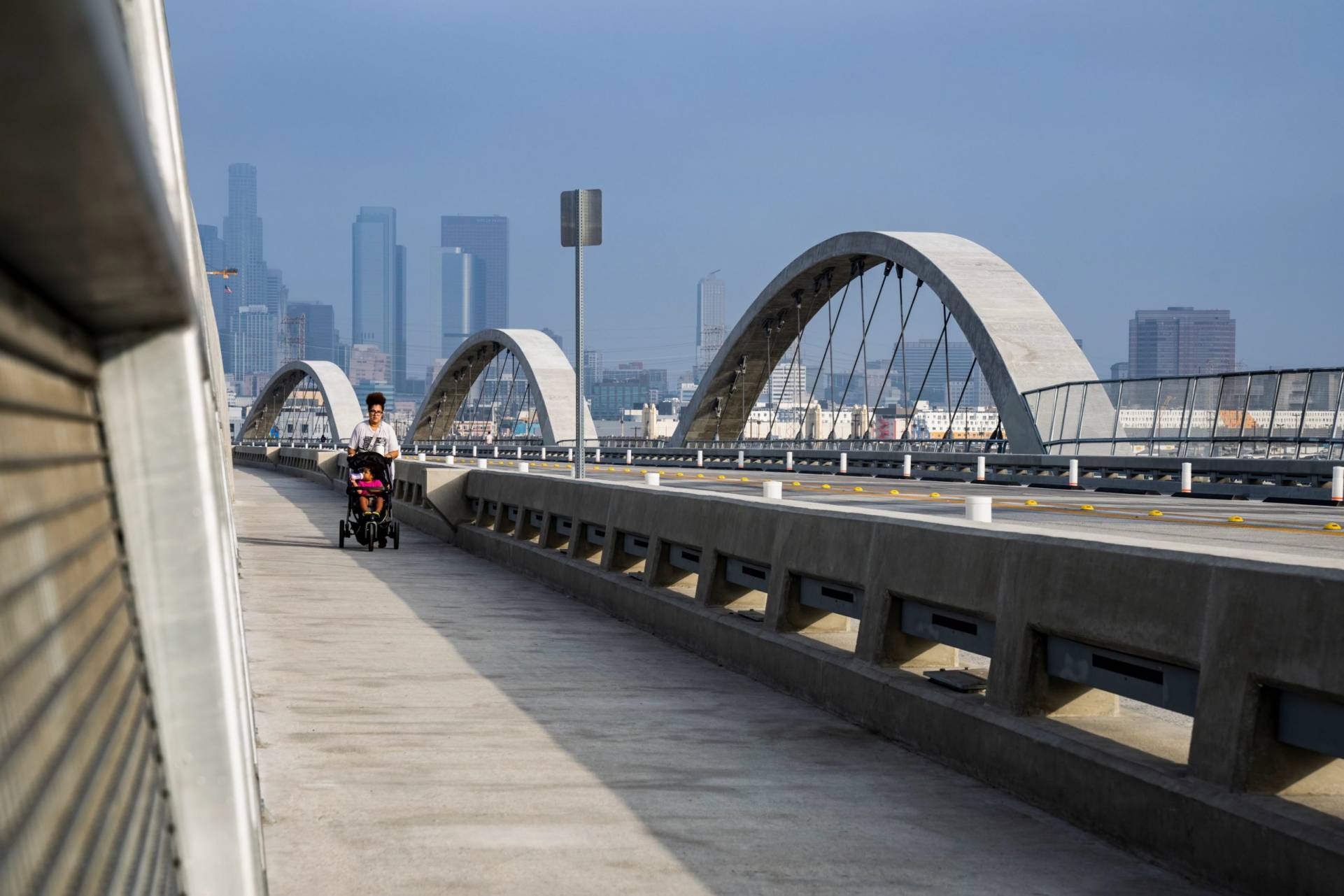

Built with pride
A new sense of ownership and awe was created amongst the community during the design and construction. The structure has quickly become a source of pride and a popular gathering place that uplifts the community.
“The city is regaining that pride that says, ‘This one-of-a-kind bridge is ours,’” said Geraldo Iniguez, project executive for Skanska-Stacy and Witbeck, the joint venture leading the Sixth Street Viaduct contractor team. “More than 450 craftsmen from the region participated in constructing this bridge, including one of the highest rates of women employed on any L.A. construction job. The community has embraced the magnitude of this landmark project and has been reenergized by it.”
“Those local workers share in a pride and energy that is palpable in the community,” Jones said. “They know they have helped to build the kind of project that may only happen once in a lifetime.”
The new bridge is even more integral to the area than its predecessor was. It serves vehicles, pedestrians and bicyclists. As a vital community connector, it has brought greater unity and transportation equity to one of the nation’s largest cities by connecting the underserved Boyle Heights community on the east with the downtown Arts District on the west.
Engineering firsts and cultural feats
The Viaduct boasts several seismic innovations that make it virtually undamageable even in a 1,000-year earthquake, establishes a new threshold for seismic safety and expands the utility of urban bridges. The next generation of triple-pendulum friction bearings were specifically developed for this project. If seismic displacements ever exceed displacement demands of a 1,000-year seismic event by a factor of about two, the bearings rapidly stiffen and transform the seismic resistance system into a traditional, non-isolation system. The isolation bearings and non-isolation system together form a “belt and suspender” system that makes bearing failure and/or unseating virtually impossible, signaling a breakthrough in seismic bridge engineering.
The new bridge retains its predecessor’s status as a one-of-a-kind cinematic backdrop. Eighteen Y-shaped bents support the clean aesthetic and flow upward seamlessly into the sculptural arches. At night, programmable LED accent lights illuminate the underside of the arches and Y-bents.
Community members expressed their desire for a multimodal structure, and the design team responded with a viaduct designed to be the heartbeat of daily life. Forty feet wider than its predecessor was, the viaduct pulses with vehicle traffic, walkers, joggers and cyclists.
It carries four vehicular lanes, two in each direction, protected bike lanes and pedestrian walkways on each side. It also features five sets of stairs and two bike ramps that connect the viaduct’s bridge deck to the ground below. The east bike ramp is an intriguing four-level, 45-foot-tall stadium-like helical ramp, making the viaduct accessible to all.
To serve as a conduit to a planned 12-acre PARC (Park, Arts and River Connectivity Improvements Project) to be constructed below the viaduct, the design incorporated the stairways and bike ramps to give users safe, direct access to future sports fields, a café, restrooms and an amphitheater.
Not content to simply offer a means of transportation, the city has made the bridge an inviting civic event space. Designed with a special loading case for pedestrians, the viaduct can be closed and the bridge deck instantly transformed into a spectacular outdoor venue for citywide parades and celebrations.
Advancing the field
The new multimodal, multipurpose Sixth Street Viaduct surpasses project goals and advances the field of seismic bridge engineering and the engineering profession as a whole with a series of innovations:
World firsts
- First bridge to use triple-pendulum friction bearing technology, modified to stiffen at a predetermined displacement and developed specifically for the project
- At 3,500 feet, believed to be the longest, seismically isolated concrete tied arch bridge ever constructed
U.S. firsts
- First application of seismic isolators within the vertical height of the Y-shaped bents
- First bridge designed with multistrand post-tension couplers, supplied by DSI, part of the CMGC team
Los Angeles/California firsts
- Largest, most complex bridge project in Los Angeles history
- Caltrans’ first use of grade 80-ksi concrete reinforcement
- Bureau of Engineering’s first use of a Construction Manager/General Contract
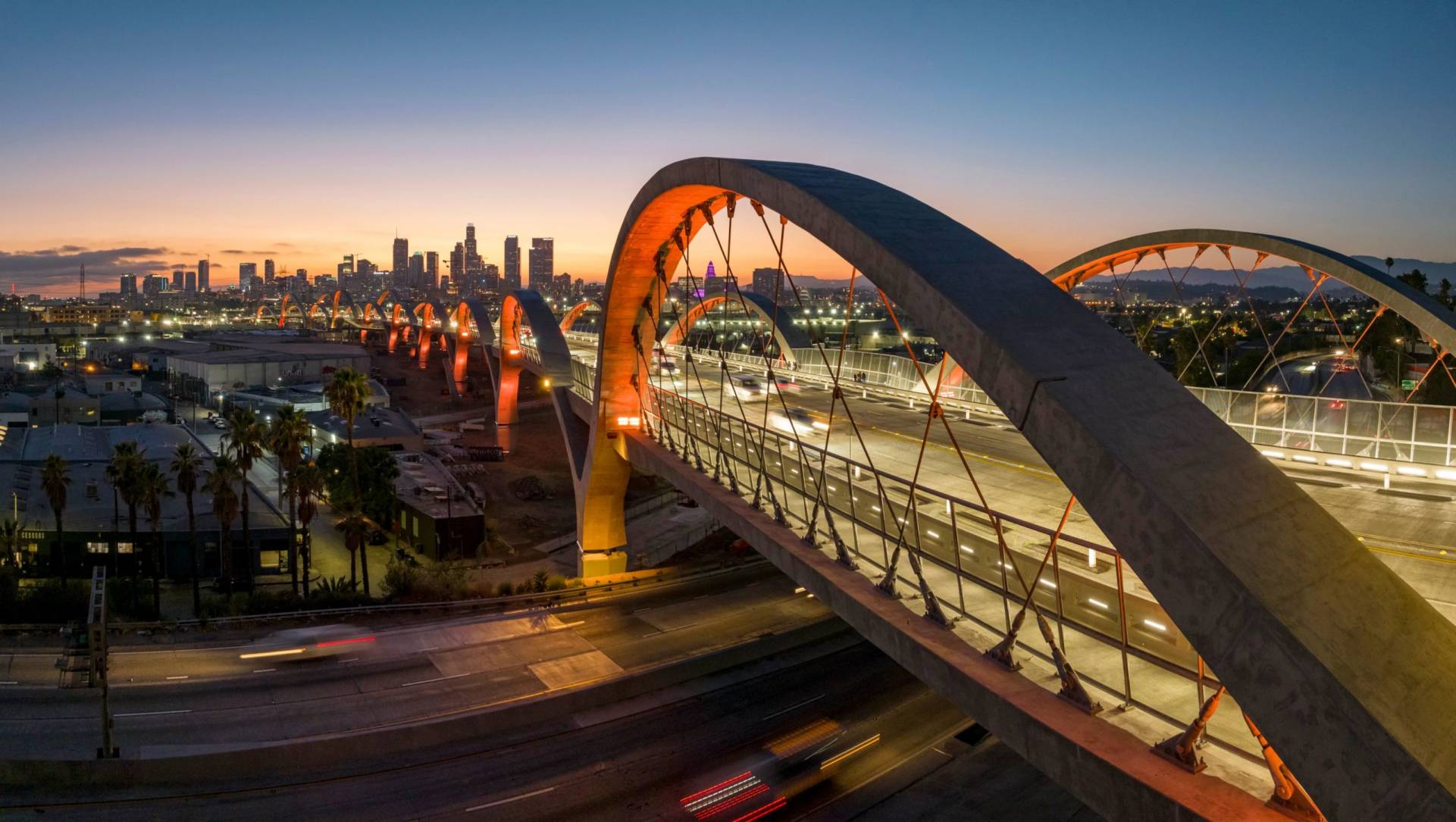
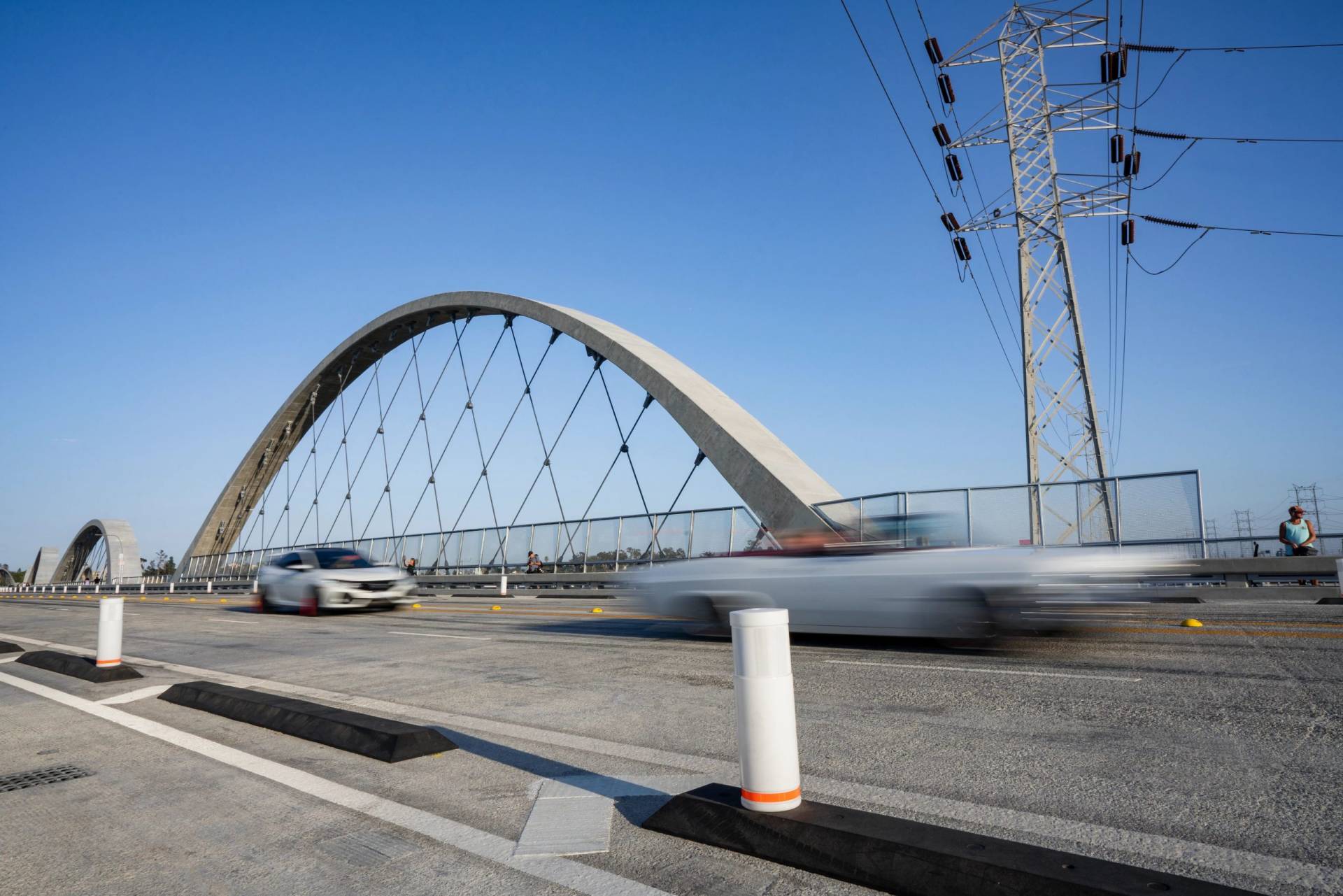
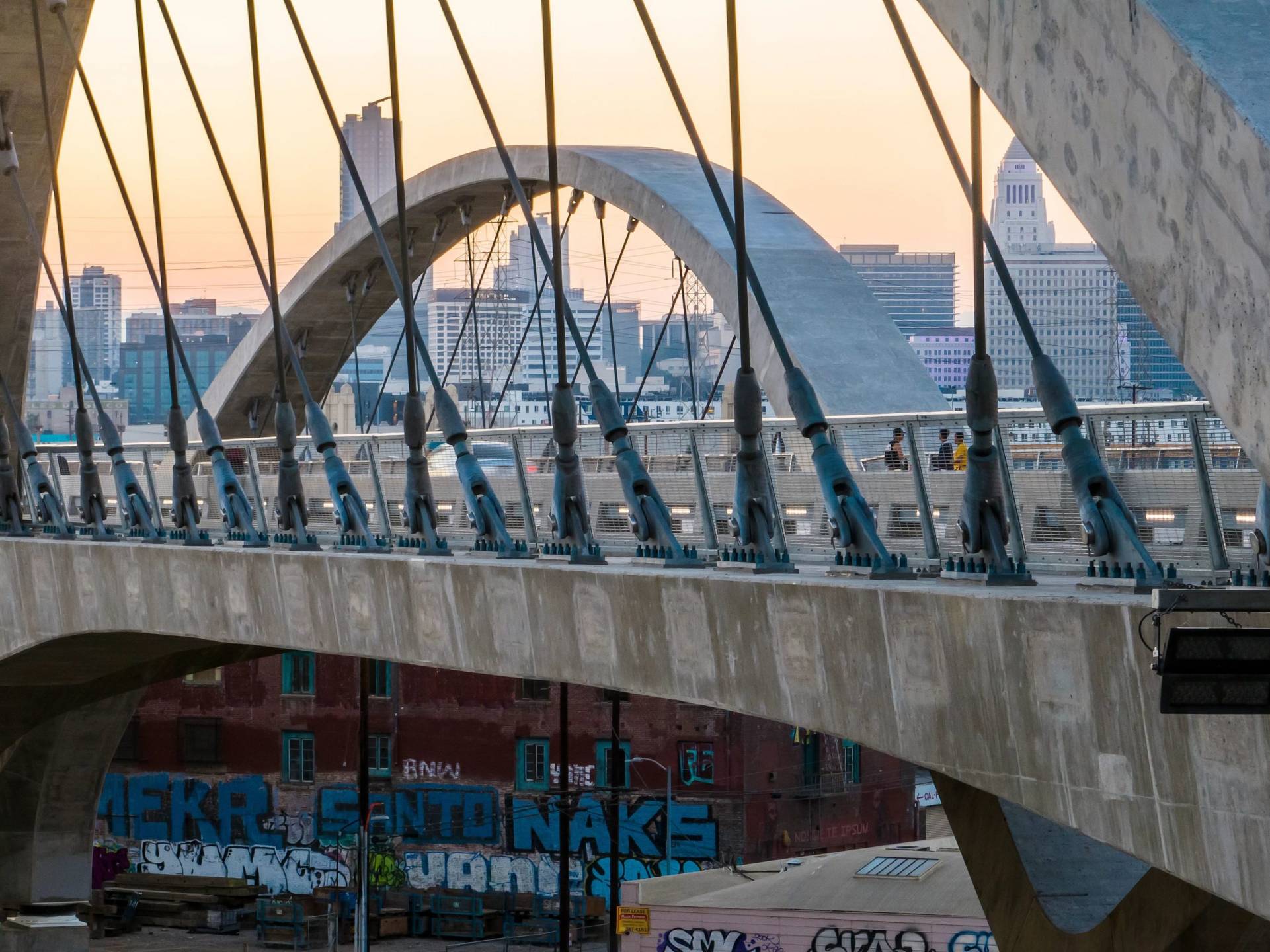
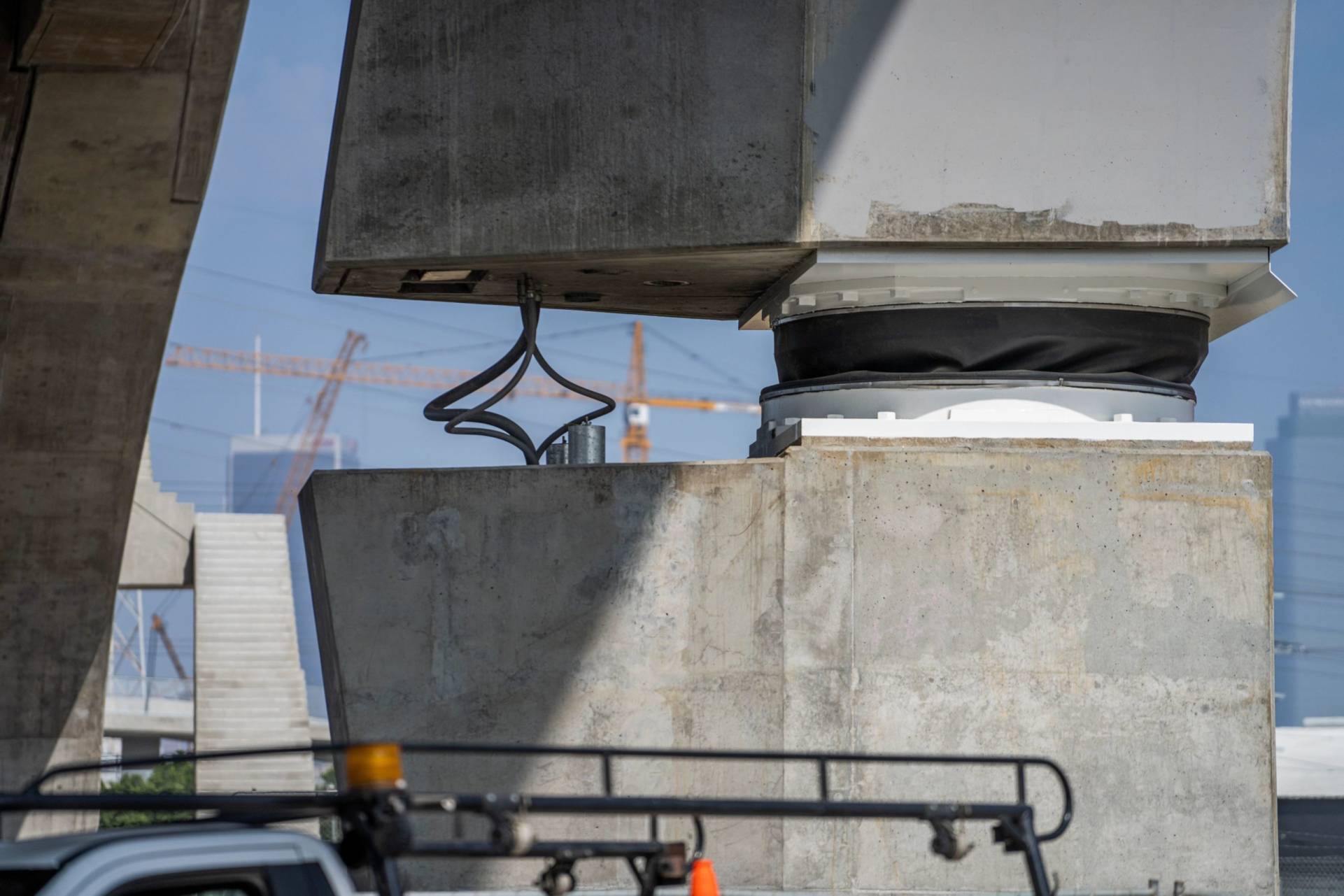
Innovation inspiration
Beyond serving as a multimodal destination and Tinseltown star, the Sixth Street Viaduct’s legacy also will be its role in producing new seismic isolation methodology and redefining current engineering thinking.
“Already, we’re beginning to see other projects around the country looking at using technologies introduced on the Sixth Street Bridge,” Iniguez said. “This project has proven you can push out the limits of what’s been done before.”
“I expect to see more intricate and unique designs in infrastructure based on what we accomplished with the Sixth Street Viaduct,” Jones said. “The project team’s collaborative approach to construction and its technical innovations already are influencing other infrastructure and building projects.”
CONTACT
Michael H. Jones, PE
HNTB project manager and engineer of record
(714) 460-1649
SEE MORE ARTICLES
MORE DESIGNER STORIES
LOWER.COM FIELD
I-69 FINISH LINE
I-74 MISSISSIPPI RIVER BRIDGE
OPPORTUNITY CORRIDOR
JTA's ORANGE LINE
